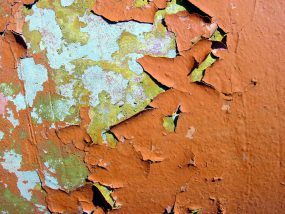Georgia Lead Based Paint Disclosure Form for Seller
Lead-based paint and lead-contaminated dust are the most widespread and hazardous sources of lead exposure for young children in the United States.
How your child may be exposed

Lead-based paints were banned for residential use in 1978. Homes built in the U.S. before 1978 are likely to have some lead-based paint. When the paint peels and cracks, it makes lead paint chips and dust. Any surface covered with lead-based paint where the paint may wear by rubbing or friction is likely to cause lead dust including windows, doors, floors, porches, stairways, and cabinets.
Children can be poisoned if they chew on surfaces coated with lead-based paint, such as window sills and door edges. They can also be poisoned if they eat flaking paint chips or eat or breathe in lead dust.
Approximately 24 million housing units have significant lead-based paint hazards including deteriorated paint and lead-contaminated house dust. About 4 million of these are home to young children.
How to find out if my home has lead-based paint
You can get a lead paint inspection and/or a risk assessment external iconto find out whether there is lead in your home.
A lead paint inspection tells you the lead content of every painted structural part (doors, walls, windows, etc.) of your home. However, it won't tell you whether the paint is a hazard or how you should deal with it.
A risk assessment tells you if there are any serious lead hazards, such as peeling paint and lead dust, and what actions to take to address these hazards.
What to do if you think your child has been exposed
If you think that your child has been exposed to lead paint or dust, contact your child's health care provider. Most children who are exposed to lead have no symptoms. The best way to tell if your child has been exposed is with a blood lead test. Your health care provider can help you decide whether a blood lead test is needed and can also recommend appropriate follow-up actions if your child has been exposed. As levels of lead in the blood increase, adverse effects from lead may also increase.
How to reduce or eliminate exposure to lead paint and dust
If your home is built before 1978:
- Ask your state or local health department about testing paint and dust from your home for lead.
- Make sure your child does not have access to peeling paint or chewable surfaces painted with lead-based paint.
- If you have peeling or chipping lead-based paint, have it removed by qualified professionalsexternal icon. There are standards for certifying lead-based paint professionals to ensure the work is done safely, reliably, and effectively.
- Make sure to renovate safely. Common renovation activities (like sanding, cutting, replacing windows, and more) can create hazardous lead dust. If you're planning renovations, use contractors certifiedexternal icon by the U.S. Environmental Protection Agency (EPA).
- Keep children and pregnant women away from housing undergoing renovation and from participating in activities that disturb old paint or in cleaning up paint debris after work is completed.
- Create barriers between living/play areas and lead sources until environmental clean-up is completed. You can apply barriers, such as contact paper or duct tape, to cover holes in walls or to temporarily block children's access to sources of lead.
- Regularly wash children's hands that can become contaminated from household dust or exterior soil.
- Regularly wet-mop floors and horizontal surfaces because household dust can be a major source of lead. Window sills and wells can also contain high levels of leaded dust, so they should also be kept free of dust.
More information
The Department of Housing and Urban Development (HUD)external icon enforces lead-based paint regulations, provides public outreach and technical assistance, and conducts technical studies to help protect children and their families from lead hazards in the home. HUD also supports state and local governments to develop cost-effective ways to reduce lead-based paint hazards. EPA's Lead websiteexternal icon provides information on checking your home for lead exposures and their Renovation, Repair and Painting (RRP) Program. Watch this EPA video about safely renovating when there is lead-based paint in your home.
Georgia Lead Based Paint Disclosure Form for Seller
Source: https://www.cdc.gov/nceh/lead/prevention/sources/paint.htm
0 Response to "Georgia Lead Based Paint Disclosure Form for Seller"
Post a Comment